Growing roses in greenhouses: rules and secrets of the masters
Rose is the queen of flowers, however, in Russian conditions, you can enjoy the contemplation of royal buds only for a few summer months. However, there is a method that will allow you to admire these magnificent flowers all year round, and even get a good profit on their sale - this is growing roses in greenhouses. Florists have already developed many methods that allow you to grow magnificent roses of different varieties, which will turn into a decoration for any holiday.
Content
- The best varieties of roses for successful breeding
- Planting and growing greenhouse roses
- Growing and basic rules of care
- Grafting a rose to a rosehip
- Correct insulation of roses in the greenhouse
- Cutting rose buds
The best varieties of roses for successful breeding
The rose has been grown as a cultivated plant for a very long time, and many varieties have been bred over hundreds of years, while not all of them are suitable for cultivation in greenhouses.
Important choose the right variety not only for the external qualities of the buds, but also for resistance to various unfavorable factors of powdery mildew, various other diseases and the action of pests.
- The most common greenhouse roses are floribunda, grandiflora, in addition, miniature tea roses are very often grown, which will decorate the bouquet.
- The most resistant varieties that rarely infect pests are considered Rose Gojar or Queen Elizabeth.
- Hybrid varieties artificially bred by humans are distinguished by good survival: Carina, Baccara, Casanova, Pascali. They can have different shades of buds, and each grower can breed a new hybrid that will have a different shade.
- There are special varieties of miniature roses, most of which were originally bred for greenhouse cultivation. These are Little Flirt in red and yellow, Skarlet Gem, which have an orange hue, and Beauty Secret - deep red roses that look just great.
- Sometimes in greenhouses, roses are grown that are fully adapted to artificial lighting. These greenhouse varieties are content with a relatively small amount of light, yet they are able to produce very beautiful buds.
The choice of rose variety depends on whether you are going to plant them, or plan to plant bushes with their own root system.
In the first case, you can get more strong and powerful stems, however, there will be much fewer flowers on grafted bushes. In addition, if you do not plan to grow flowers only for sale, you can focus on personal taste.
Planting and growing greenhouse roses
Greenhouse plants have their own characteristics, because their growth and development are completely dependent on the conditions created by man.
It is important to follow the basic rulesthat will allow you to get an active shoot with a large number of buds that can survive pruning and transportation. To grow roses, planting is carried out as follows:
- Growing roses requires an enriched soil rich in nutrients.Peat, superphosphate, rotted manure and other types of fertilizers are added to the soil, which should provide the plants with everything they need for growth.
- The planting material must be wounded in a place protected from the cold, since the seedlings are very afraid of frost. For short-term storage, the seedlings are placed in open cardboard boxes, they can also be buried in the ground, leaving the grafting site open. The bushes should not dry out, they need to be constantly sprayed.
- Before planting, the prepared seedlings are kept in clean, settled water for some time, then cut about 20 cm above the graft and planted in the ground, the temperature of which should not fall below 12 degrees. As a result, the vaccination site is near the ground. Planting depth is a very important aspect: poorly buried seedlings will quickly die, and those planted too deep can begin to rot.
- 10 seedlings or a little more are planted per square meter, depending on the selected variety and the future size of the bush. If too many of them were planted, in the second year the bushes will have to be thinned out so that they do not interfere with each other.
- Before planting, the soil must be well moistened, this will allow the plant to root faster and ensure maximum soil compaction. In a large garden bed, it is better to water the soil with a hose.
With the right selection of seedlings you can get guaranteed fast growth and a large number of buds in the shortest possible time, so you need to carefully consider the selection of planting material.
Growing and basic rules of care
At the first time after planting, the temperature in the greenhouse should not exceed 10 degrees.
If it is warmer, the seedlings will grow unevenly, and some of them will die, which is highly desirable to avoid. If the temperature rises above 15 degrees, then the roses will need to be constantly watered to prevent the roots from drying out. Immediately after disembarkation for a while, the seedlings can be covered with a film so that the earth does not dry out, as this can harm the roots. When the shoots reach a height of 2 cm or more, the film is removed, and a rapid growth of green mass can be expected.
The rose does not like damage to the leaves, in addition, it is a moisture-loving plant that requires frequent spraying.
At first, after planting, the roots will not be able to receive the required amount of water, so the air itself must be humid. The more lush the bush is, the more buds will appear on it, and the higher its productivity will be. To improve leaf growth, several recommendations should be followed:
- The humidity in the greenhouse should be about 70%, this ensures proper moisture in the green mass.
- In hot weather, do not allow direct sunlight to hit the leaves and buds. The rose is very fond of sunlight, but too hot rays can leave burns on the leaves and lead to shedding of the petals. The shade during the hottest hours will keep the bush healthy.
- The soil should be loose and moist, a small amount of mineral fertilizers is applied to it every month. The caked soil prevents the growth of the root system, which means that the leaves will grow much worse.
- A greenhouse requires constant care, as a rose is a capricious plant. It will need to be regularly sprayed with pest control agents, the soil is cleaned of weeds that can negatively affect the root system.
- It is recommended to have a rest period in December. This is the time when greenhouse temperature does not rise above 3 degrees, the shoots of all plants are cut off. This is necessary to prevent the aging of the bushes: after the end of this period, young shoots will grow back with renewed vigor, and this will again allow you to get a large number of bright buds.
It is quite difficult to care for prose, a capricious plant quickly reacts to any changes in temperature and light.
Grafting a rose to a rosehip
Growing bushes with its own root system is not the only option in the greenhouse.Very often, many varieties are propagated by grafting, and for this they use common rosehip... It grows quickly and has a strong root system, which means that it is very likely that the grafted shoots will take root, and you can get young shoots of the best varieties of greenhouse roses.
Rosehip seedlings, which already have their own root system, are planted in a container with soil, which consists of turf and humus in a 4: 1 ratio.
During the winter, seedlings are stored in a cool place, such as in a basement or in an outdoor greenhouse. You can vaccinate in March-April, this is the best time for a new shoot to take root. This operation is carried out as follows:
- The seedlings are transferred to a greenhouse for a while, the air temperature in which should be 8-10 degrees.
- Gradually, the temperature is increased to 20 degrees, for the plant this is a signal to the beginning of sap flow, after which the grafting can be carried out.
- Cuttings harvested in the fall can be grafted for about 10-15 days.
- The neck of the stock is freed from the adhered earth, its aerial part is carefully cut off.
- On the root collar, gently the bark is cut, the length of the incision is up to 3 cm. The edges of the cut bark are folded back with a knife.
- A scion stalk is carefully inserted into the incision; there should be at least 2 buds on it. After that, the vaccination site is wrapped in polyethylene.
- Pots with grafted bushes are placed in boxes of peat or sawdust.
- A film is stretched over the grafted processes; under it, in a greenhouse, it is necessary to maintain a temperature of about 22-25 degrees.
- Young shoots will start to appear soon, and very soon leaves will appear on the scions.
- After that, it will be possible to clean the greenhouse, and the bushes are either placed on the shelves of the greenhouse, or planted in large containers for further cultivation.
Reproduction by grafting helps to get bushes with a stronger leaf mass, but it is not always possible to get a large number of buds in the first year.
Correct insulation of roses in a greenhouse
To grow quickly, a rose needs a certain microclimate with a constant correct temperature and no drafts. To do this, you need to take care of the insulation of the greenhouse and the organization of additional artificial lighting using lamps.
This applies to some aspects:
- The bottom of the greenhouse should not be allowed to freeze, as this will lead to the rapid death of the root system of plants.
- Because of this, very often greenhouses are installed on a foundation: it should not be too strong, since the structure is lightweight, but it must have a basement height of at least 30 cm.
- With a strip-reinforced foundation, it is necessary to make a cushion of sand and gravel with a deepening of up to 70 cm.
- It is more profitable to make a greenhouse frame from a metal profile, since a wooden one creates too much shading area.
- Only cellular polycarbonate is used as a coating material - an organic material provides effective protection from the cold.
- The best option is to use not one layer of polycarbonate, but two, so that an air chamber forms between them. This will preserve the light output, but the greenhouse will be much better protected from cold air.
- The thermos effect allows additional savings on heating costs.
The main variant of heating equipment is an electric boiler, with the help of which it is possible to provide uniform heating without sudden temperature fluctuations.
However, this is also the most expensive type of heater, so sometimes you have to look for other options. For artificial lighting, lamps are used that can almost completely replace sunlight on cloudy days. However, overheating should not be allowed: if the sun is too bright, the greenhouse will need to be covered with curtains, and roses will need additional hydration.
The best option is drip irrigation from above, in which water will fall not only on the ground, but also to a greater extent on the leaves.
Cutting rose buds
When growing a bush, remove side shootsso that some of the strongest shoots remain, on which large buds can grow.
Even after pruning, they will very quickly be ready for subsequent flowering, and you can again get magnificent roses:
- Flowers are cut even before they bloom completely, and this operation is recommended to be carried out in the morning.
- At the first cut, the grower should try to keep as much green mass as possible so as not to weaken the plant.
- After cutting, the buds are transferred to a sorting room, they must be stored either in containers with cool water or in the refrigerator for 12 hours.
- After that, they will be ready to be sent for sale.
It is not necessary to grow roses in a greenhouse just for sale. An amateur gardener can set aside one corner for them in the greenhouse to paint their home gorgeous fresh buds... 1 strong bush is capable of producing up to 8-9 flowers per season, and they can turn into the best home decoration.
You can experiment with crossing different varieties of roses, resulting in interesting hybrids.
Growing roses in greenhouses has been used for a very long time, and now the most advanced technologies have been developed that allow receive a large amount buds. With the right lighting and soil moisture, the bush will regularly produce flowers, and they can become a constant source of profit.
More information can be found in the video.





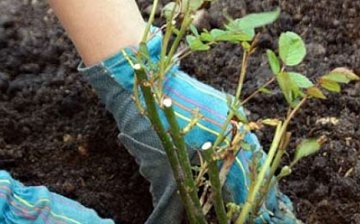
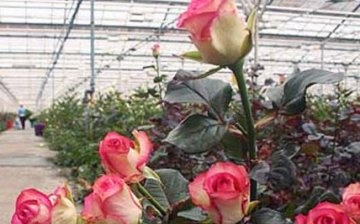
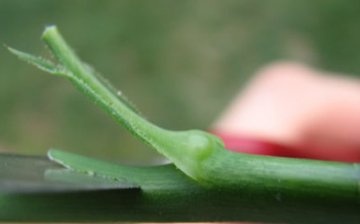
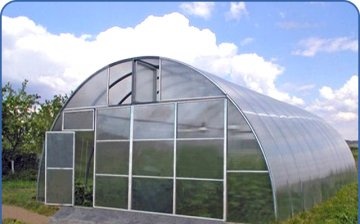
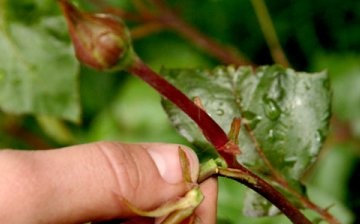









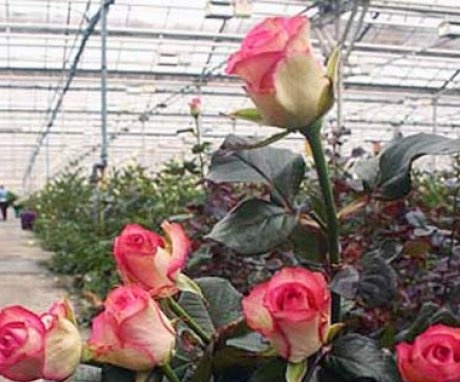

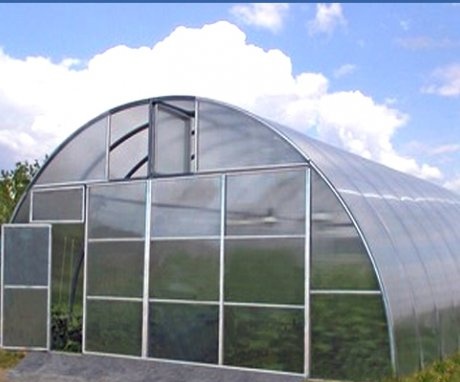
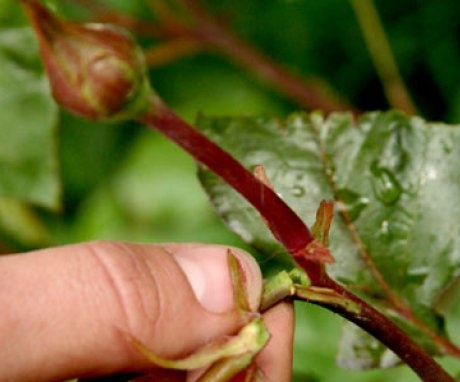
Oh, the rose is the queen of flowers. And in order to grow it, you need truly royal diligence and patience!
In greenhouses, roses are usually grown for sale in flower shops, and very often I began to hear about a tea rose. Is a tea rose a special kind and can you make teas from it? Or is it just a name because of its diminutiveness?
In our region, roses in the open field bloom 3 times, and in the greenhouse 4 times, that is, the gain is obvious. Therefore, the meaning, to build a greenhouse is obvious and you do not need to heat it, unless, only, you do not plan to grow some
In our region, roses in the open field bloom 3 times, and in the greenhouse 4 times, that is, the gain is obvious. Therefore, the meaning of building a greenhouse is obvious and there is no need to heat it, unless, only, you do not plan to grow some exotic plants in it.